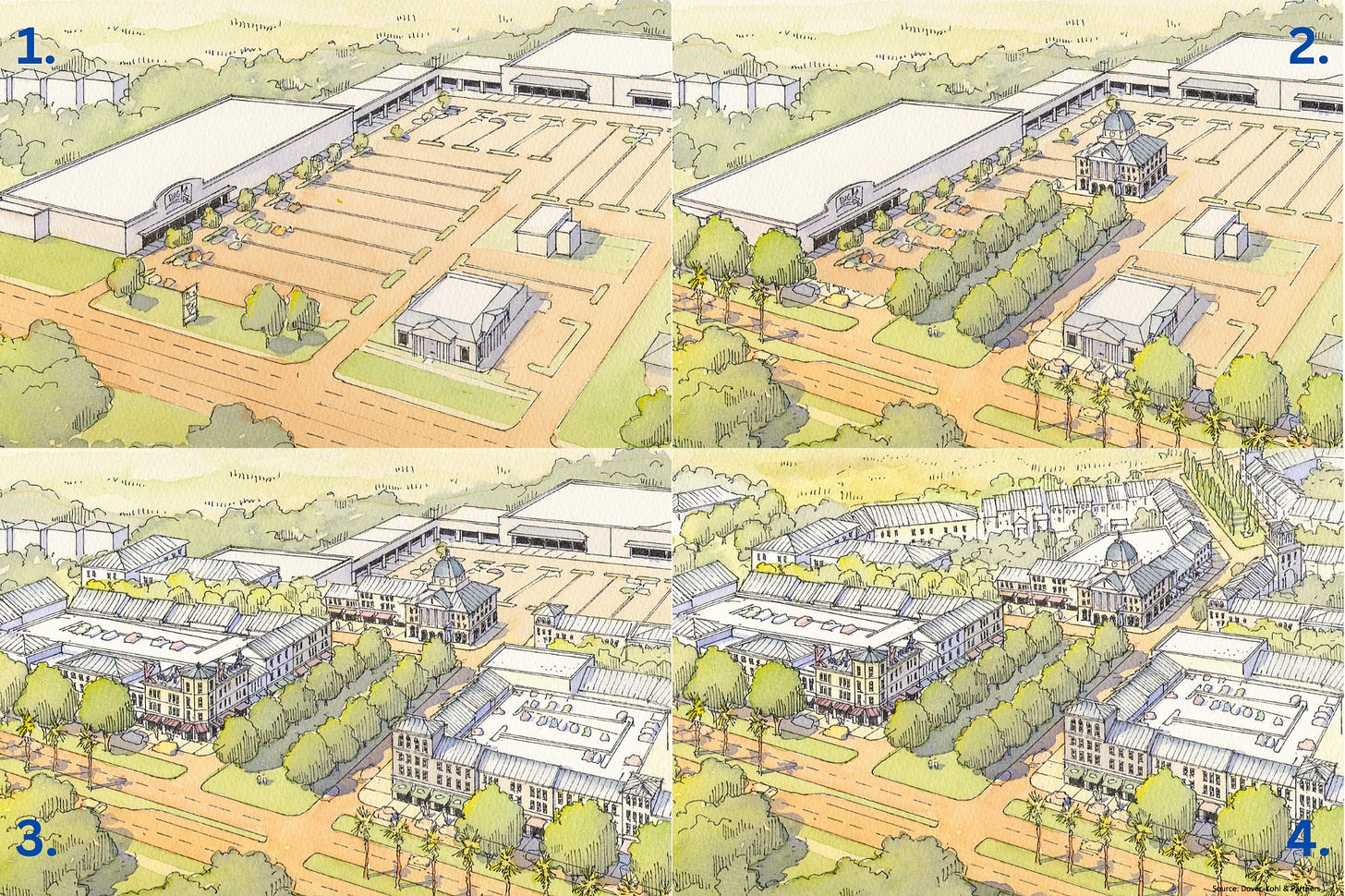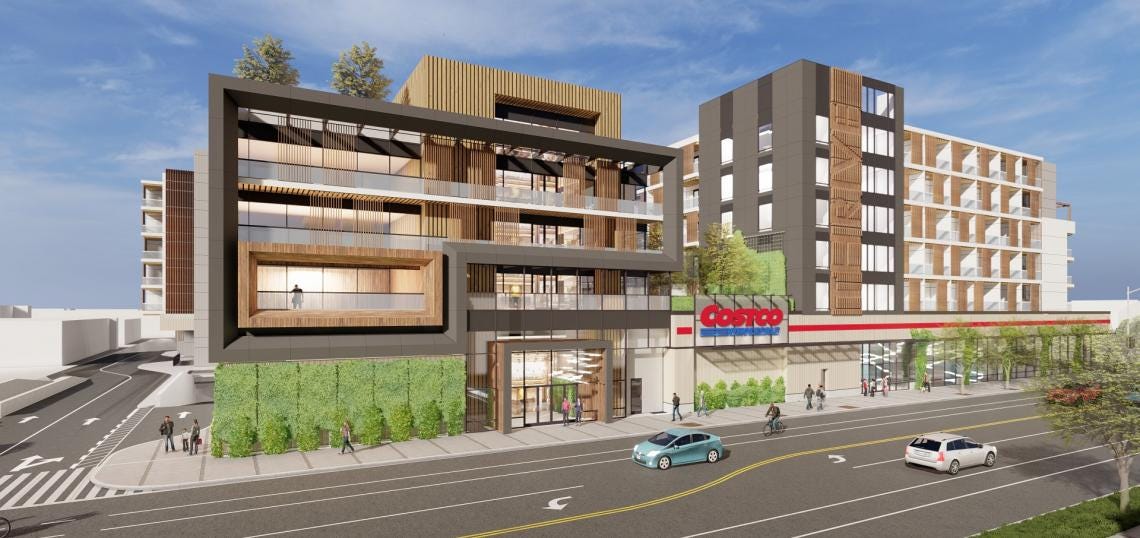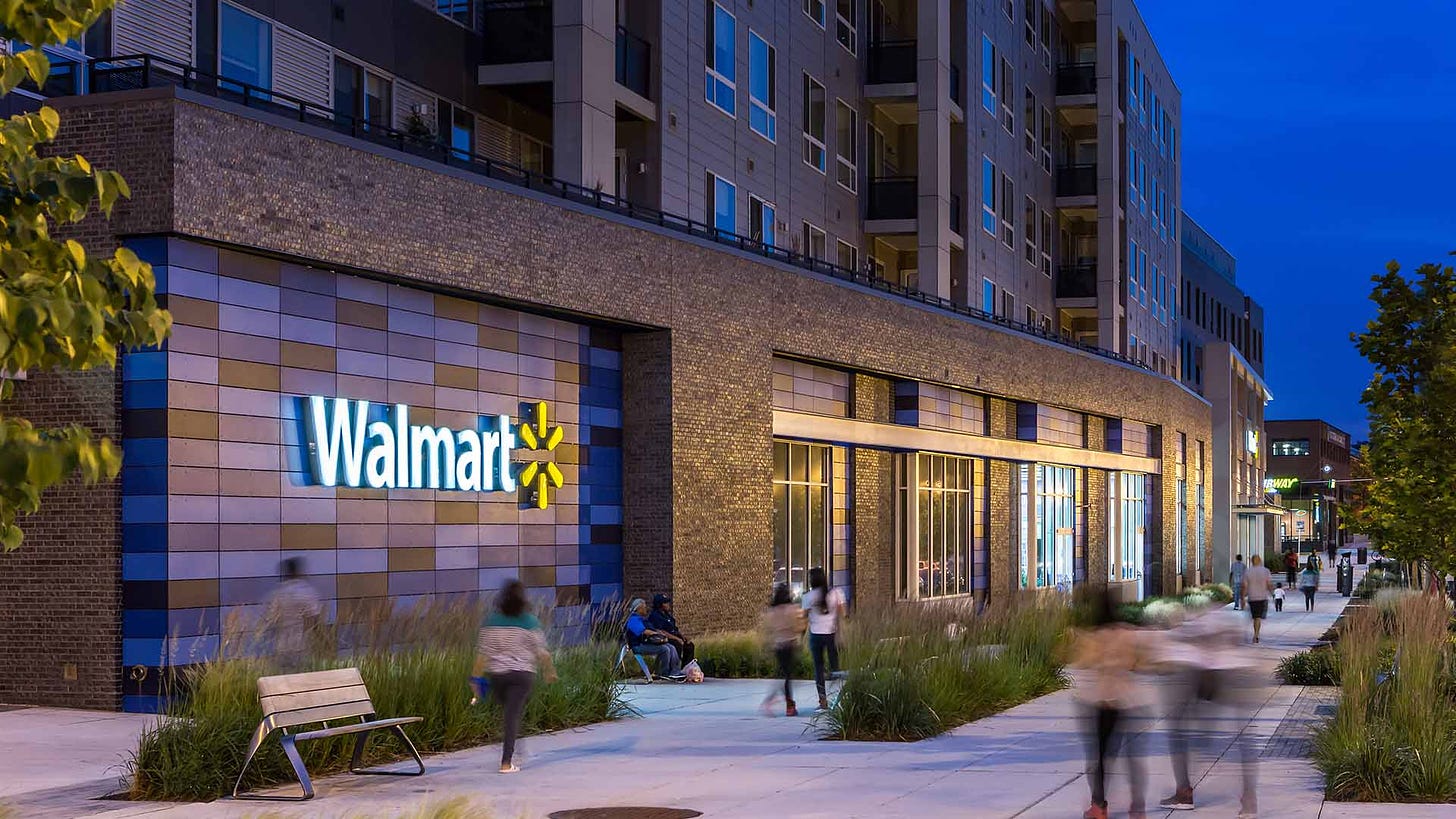Hope for the Suburbs Rests...in Mixed-Use Big-Box?
Connecting housing to major retailers is a major incremental step suburbs can take towards human-centered development.
Big-box stores are one of the cornerstones of the American suburban model. And they can feel like one of the most daunting pieces of the Suburban Machine to overcome: when you have major corporate influence combined with local political desire to attract flashy big-name companies, it’s usually a fight you’re going to lose.
Some suburbs have started to learn from their mistakes and begin retrofitting their parking-saturated strip malls into more walkable, mixed-use, economically productive places. But unfortunately, there are still thousands of towns across the country are still racing to the bottom to get a Walmart or similar commercial anchor.

So for places where the political will simply doesn’t exist to stop courting and subsidizing major big-box retail (or corporate campuses), is all hope lost?
Not necessarily. There’s a step before “full-fledged urbanism” that cities can take that can begin to move the needle: “mixed-use big-box.”
As an example of what this can look like, Thrive Living is proposing an 800-unit mixed-use project in the Baldwin Hills neighborhood in Los Angeles. The project would have a Costco on the first floor, and is also less than half a mile from a stop on the E Line metro.

While most suburbs don’t offer quality transit access to mimic, the approach Thrive Living is taking to bringing in a conventional retailer still provides a model worth copying. With 180 of the 800 units being set aside for affordable housing, the project not only delivers Costco hundreds of nearby customers, but also a reliable source of prospective close-by employees that wouldn’t require a vehicle to get to work.
This is all the more valuable in suburban contexts, particularly in hot markets where prices quickly price out lower-income buyers and renters and leave the retail and service industries short-staffed.
And while Costco isn’t Walmart, which is perhaps even more famous for playing host to uninspiring architecture and seas of parking in suburban contexts, Walmart has also shown a willingness in the past to be part of such a development, such as this project in the Fort Totten neighborhood in Washington, D.C:

Especially with the rising interest in manufactured and artificial downtown districts, there’s truly no excuse for even the most old-school towns to begin pushing for connecting housing to retail. And with the unfolding of the current economic recession likely to come for major retail stores across the nation, it’s in every city’s best interest to connect its major economic players with as many nearby customers as possible.
Great urbanism is seldom a zero-sum game. More often, it’s identifying the most palatable next step towards advancing the quality of life for immediate residents that will shift attitudes and prep the canvas for bolder, more significant actions in future years and decades.
Imagine where the suburbs would be if every big retailer had 4-7 stories of housing upstairs?



